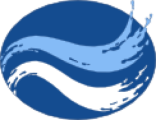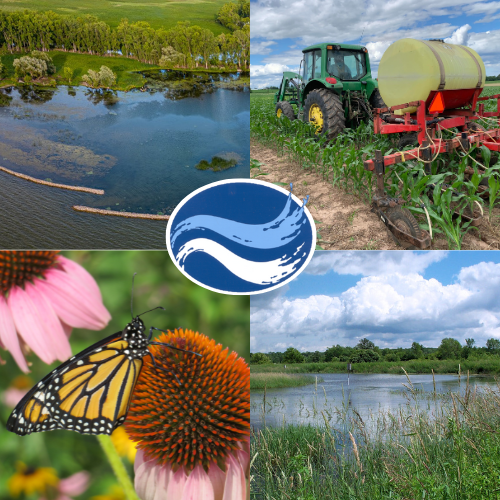
| In Wisconsin, locally led conservation is key to healthy soils, resilient farms, clean water, and vibrant communities.Every county in Wisconsin has a:
The LCC and LWCD work together as the "boots on the ground" to carry out conservation efforts in their communities. They operate under the authority of Chapter 92, Wisconsin’s Soil and Water Conservation and Animal Waste Management Law which is administered by the Department of Agriculture, Trade and Consumer Protection (DATCP). 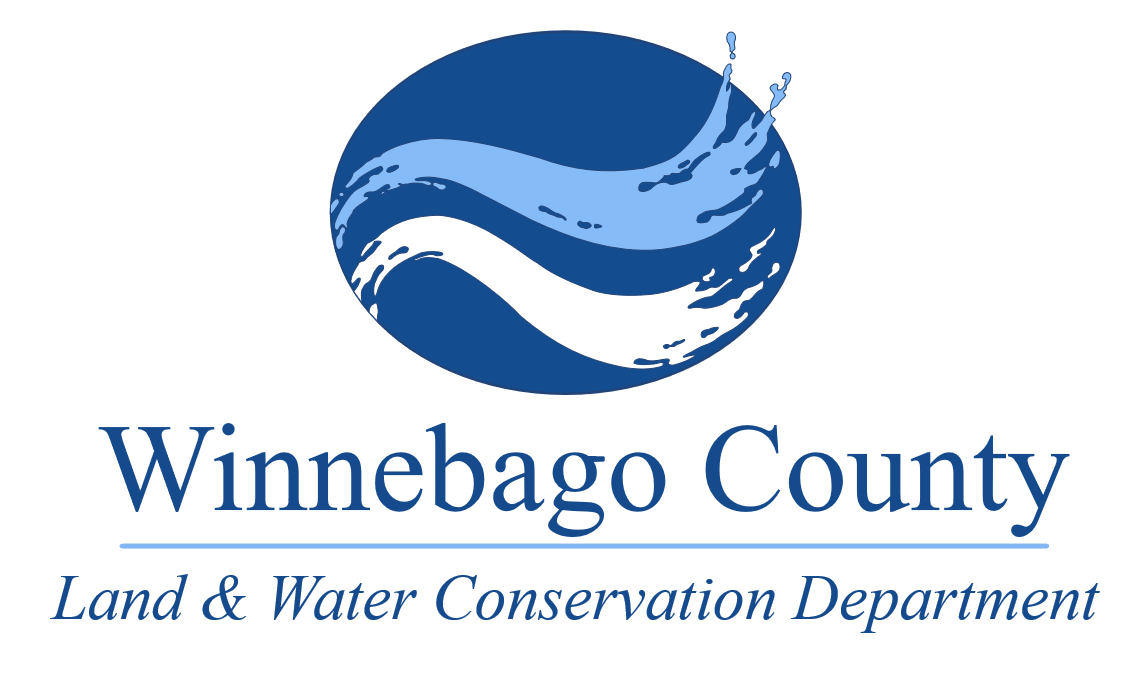 |
Our Mission: The Winnebago County Land and Water Conservation Department (LWCD) is dedicated to providing a full range of professional services in the planning, design, and implementation of programs and projects that PROTECT, RESTORE and SUSTAIN the natural resources of Winnebago County.
- LWCD - Our Staff & Expertise
Land & Water Conservation DepartmentThe Winnebago County LWCD staff consists of 8 County employees, with backgrounds in soil and water conservation, resource management, agronomy, watershed management, geography, environmental science, natural resources, graphic design, communications, and geographic information systems.
LWCD staff are trusted advisors to private landowners and farmers, serving as a bridge between conservation science and real-world land use to balance productive land use with natural resource protection.
Staff Directory 2024 Annual Report
- LCC - Your County Conservation Leaders
Land Conservation CommitteeThe LCC is a standing committee of the Winnebago County Board. Committee members promote conservation awareness, support local stewardship and provide leadership and coordination of local conservation efforts. Working closely with the LWCD, the LCC establishes policies for the delivery of land and water resource management programs, services and cost-sharing in Winnebago County, including developing the County's Land & Water Resource Management (LWRM) Plan. LCC members are community members, business owners, and farmers, most of whom are elected county board supervisors.

Chuck Farrey
District 30 Supervisor
LCC Chair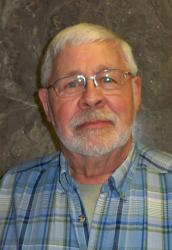
Douglas Nelson
District 35 Supervisor
LCC Vice Chair
Kristl Laux
District 2 Supervisor
LCC Secretary
Tim Macho
District 20 Supervisor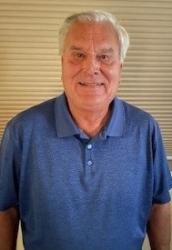
Doug Zellmer
District 22 Supervisor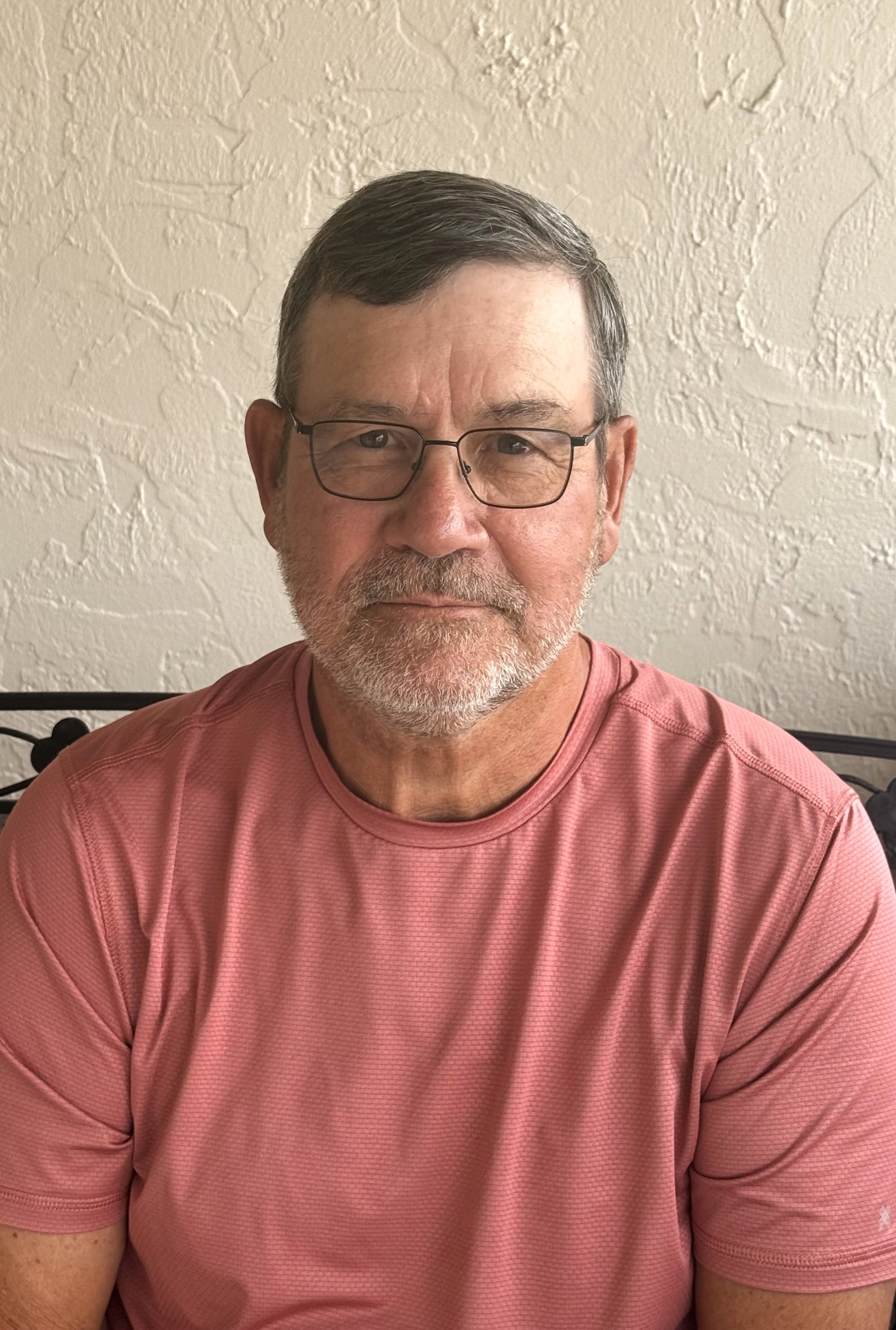
Bruce Bohn
Citizen Member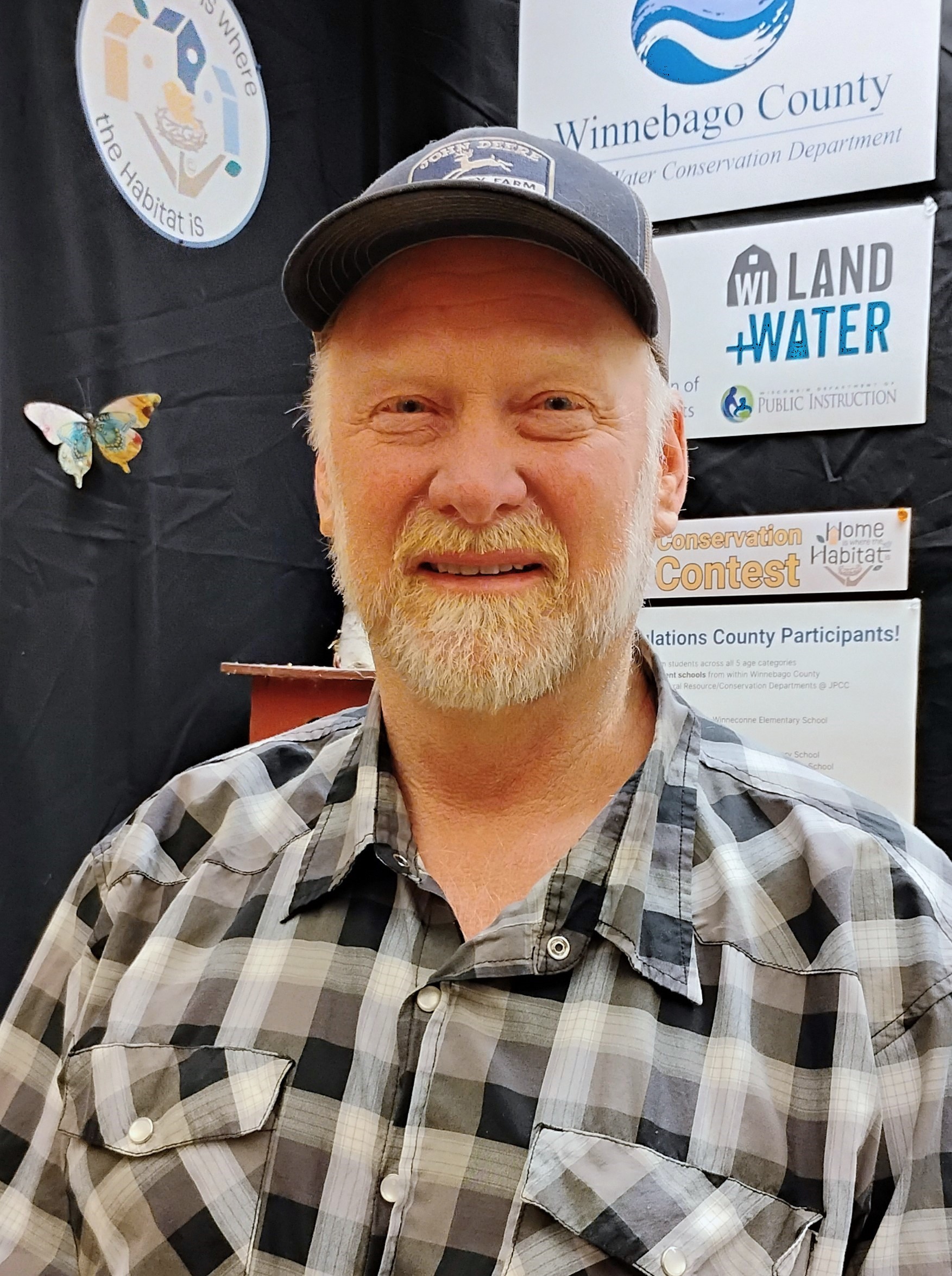
Dan Stokes
Citizen MemberLCC Meetings
The LCC meets monthly on the first Monday of the month at 9:00am at the James P Coughlin Building (JPCC), unless otherwise noted.
Meeting Agendas & Information
- Meeting Agendas and other information are available from the County Board's Meeting Calendar (May 2024-current). Meeting minutes prior to May of 2024 can be accessed here.
- Locate the meeting on the calendar/list
- Click on the meeting listing. This will automatically bring up the agenda, then you can use the menus on the left hand side to locate meeting packet files, live-stream video, recordings, and meeting minutes.
Join Us!
- People wishing to participate in meetings can join us in person at the JPCC or remotely using the Microsoft Teams link located at the top of the meeting agenda
A live-stream video (and recording following the meeting) is available under "Meeting Media" on the meeting calendar link. This is not an interactive way to join the join the meeting - to participate, use the Microsoft Teams link on the agenda.
LCC Handbook
(Developed by the WI Land + Water Association)
- Meeting Agendas and other information are available from the County Board's Meeting Calendar (May 2024-current). Meeting minutes prior to May of 2024 can be accessed here.
- Our Work in Conservation
Planning and Regulation
Develop and maintain the county’s Land and Water Resource Management Plan (LWRMP).
Ensure compliance with state laws and local ordinances related to land use and manure storage.
Financial Support
Administer state and county resource management programs, including allocation of cost-share funds to private landowners and producers for projects that improve water quality, increase soil health, and achieve agricultural performance standards.
Apply for and manage other local, state, and federal grants for County Land & Water Resource Management initiatives.
Technical Expertise
Project planning and design of structural best management practices, including oversight of installation and construction.
Assistance with permit applications and requests for construction proposals.
On-farm consultation and guidance to implement and maintain agricultural soil health practices.
Consultation on water quality concerns (primarily in rural areas of Winnebago County) including reports of erosion, pollution and runoff.
Provide tools and supplies that assist landowners with planting best management practices (tree supplies and native planting resources).
Education and Outreach
Educate landowners, students, and the public on conservation practices and the importance of protecting natural resources.
Host workshops, field days, and events to demonstrate and promote sustainable land and water use.
- Guiding Laws & Policies
Chapter 92: Wisconsin’s Soil and Water Conservation and Animal Waste Management Law
Enacted in 1981, the law was created to address serious concerns about soil erosion and water pollution caused by nonpoint sources, such as runoff from farms and other land uses. The Wisconsin Legislature recognized that these issues threaten the health of citizens, the state’s natural resources, agricultural productivity, and overall economy. The law aims to protect and improve the state's natural resources by:
- Establishing goals and standards for conservation of soil and water resources;
- Providing cost-sharing, technical assistance, educational programs, and other programs to conserve soil and water resources;
- Encouraging coordinated soil and water conservation planning and program implementation; and
- Enabling the regulation of harmful land use and land management practices by county ordinance where necessary.
Each county is required to have a Land and Water Resource Management (LWRM) Plan, which must be approved by the Wisconsin Department of Agriculture, Trade and Consumer Protection (DATCP). These plans are valid for ten years, with a mid-term review conducted by the state Land and Water Conservation Board (LWCB) after five years.
Chapter NR 151: Wisconsin's Runoff Management Law
NR 151 is part of Wisconsin's administrative code that sets minimum performance standards and prohibitions to reduce polluted runoff and protect water quality across the state. These standards apply to both agricultural and non-agricultural practices and are designed to ensure that farming and land management activities meet water quality goals.
Key Requirements for Agricultural Operations:
- Proper nutrient management (e.g., manure and fertilizer application)
- Setbacks from waterways to reduce runoff
- Use of vegetative buffer strips along water bodies
- Control of runoff from feedlots, manure storage, and milking centers
These standards are the minimum requirements for protecting Wisconsin’s rivers, lakes, and groundwater while supporting sustainable farming practices.
MS4 (Municipal Separate Storm Sewer System)
Winnebago County is required per NR 216 Wis. Adm Code to have a Municipal Separate Storm Sewer System (MS4) permit for its urbanized areas. A "MS4" is defined as a conveyance or system of conveyances including roads with drainage systems, municipal streets, catch basins, curbs, gutters, ditches, constructed channels or storm drains.
The Winnebago County Highway Department holds the MS4 Permit. Each permit cycle lasts 5 years and permit compliance is periodically evaluated by the Wisconsin DNR. Winnebago County was most recently audited by the DNR in 2022. The result of that audit included several minor procedural and programming recommendations that the County will be implementing in 2023 and 2024. The LWCD conducts annual monitoring, mapping, and reporting for the MS4 permit and is a member of the Northeast Wisconsin Stormwater Consortium.
Winnebago County General Code includes an Illicit Discharge and Elimination ordinance to enforce compliance to eliminate illegal discharges in the system. We also inspect the system annually as part of a monitoring program.
- Local Water Quality Issues
Protecting Water Quality in Winnebago County
Winnebago County contains over 91,000 acres of surface water—the largest inland surface water area of any county in Wisconsin. These waters support drinking water for over 200,000 people, and attract millions of residents and visitors each year for boating, fishing, swimming, hunting, and trapping.
Why Water Quality Matters
- Lake Winnebago alone supplies drinking water to cities including Oshkosh, Neenah, Menasha, Appleton, Sherwood, and Waverly.
The Winnebago system is within 75 miles of more than 2 million people, making water quality protection a high priority.
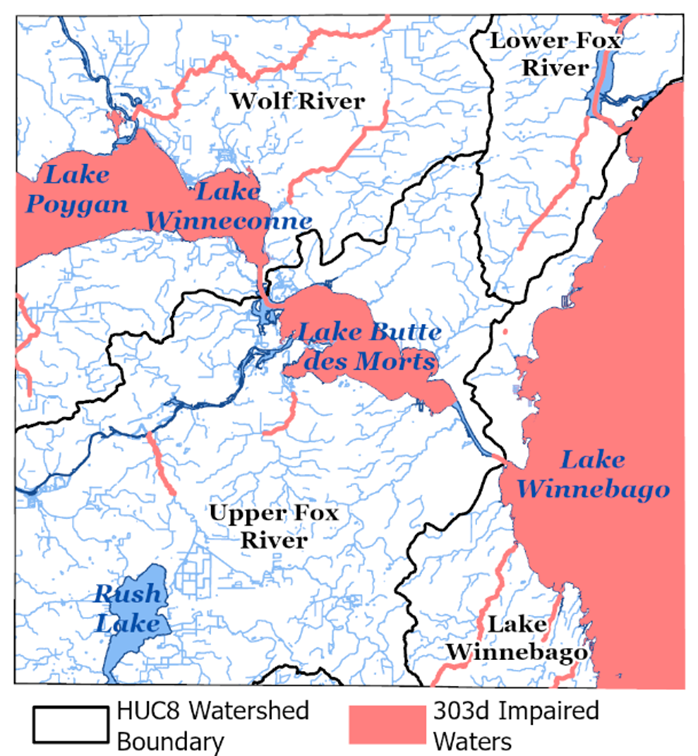 Water Quality Concerns
Water Quality ConcernsUnder the Clean Water Act (1972), states must identify polluted waters and develop plans to restore them. In Wisconsin, the Department of Natural Resources (DNR) monitors water quality and maintains a list of impaired waters under Section 303(d) of the Act.
Most of the major water bodies in Winnebago County are listed as impaired and require restoration efforts to meet water quality standards.
Nonpoint Source Pollution (Polluted Runoff)
One of the biggest threats to clean water in Wisconsin is polluted runoff, also known as nonpoint source pollution. When rain or snowmelt flows over land, it picks up pollutants such as:
- Dirt (sediment)
- Fertilizer and phosphorus
- Oil and grease
Bacteria
These pollutants come from farm fields, city streets, lawns, and driveways, and eventually reach our surface water and groundwater.
Wetland Loss & Runoff
Decades of high water levels, combined with wind, wave, and ice erosion, have destroyed tens of thousands of acres of shoreline wetlands. These wetlands once acted as natural filters. Their loss has allowed more sediment and nutrient runoff to reach our lakes, rivers, and streams.
Sediment
Sediment is made up of soil, sand, and other tiny particles that wash into rivers, lakes, and streams when soil erodes from fields, construction sites, or disturbed land. While some sediment is natural, too much can cause several problems:
- Cloudy Water:
Sediment makes the water murky or cloudy, which blocks sunlight from reaching underwater plants. These plants are important because they produce oxygen and provide food and shelter for fish and other aquatic life. - Harming Aquatic Life:
Sediment can smother fish eggs and clog the gills of fish and other creatures, making it hard for them to breathe and survive. - Carrying Pollutants:
Sediment often carries other pollutants like phosphorus, pesticides, and heavy metals attached to its particles. - Clogging Waterways:
When sediment builds up, it fills streams, rivers, and lakes, reducing their depth and capacity, which increases flooding risk and makes navigation and water flow harder to maintain. Increasing Costs:
Sediment buildup in reservoirs and treatment plants raises the cost of cleaning and managing water supplies for drinking, recreation, and agriculture.
Just one dump truck can hold up to 10 tons of sediment (or soil).
LWCD-supported conservation efforts reduce sediment runoff by an estimated 1,400 tons each year.Phosphorus
Phosphorus itself isn’t bad—it’s actually an essential nutrient for plant growth. But too much phosphorus in water is a problem. Here’s why:
- Algae Blooms:

Extra phosphorus in lakes and rivers fuels the rapid growth of algae. These blooms make water green and murky, smell bad and can be toxic to people and pets. - Oxygen Depletion:
When algae die, they sink and decompose, using up oxygen in the water. This leads to “dead zones” where fish and other aquatic life can’t survive. - Disrupts Recreation & Drinking Water:
Algae blooms can close beaches, limit boating and fishing, and clog water treatment systems. In some cases, they can make drinking water unsafe. Ecosystem Damage:
Excess phosphorus upsets the balance of aquatic ecosystems, harming fish, plants, and other wildlife.
Just one pound of phosphorus can produce up to 500 pounds of algae.
LWCD-supported conservation efforts reduce phosphorus runoff by an estimated 2,700 pounds each year.
- Our Water Quality Improvement Plans
Winnebago County Land & Water Resource Management (LWRM) Plan 2021-2030
Each county in the state is required to have a Land and Water Resource Management (LWRM) Plan approved by the Wisconsin Department of Agriculture, Trade and Consumer Protection (DATCP). LWRM Plans are approved for ten years, with a review by the state Land and Water Conservation Board (LWCB) in year five.
Winnebago County LWRMP 2021-2030 (PDF)
Other Community Plans
Winnebago County Waterways Lake Management Plan (Fox-Wolf Watershed Alliance - FWWA)
The Winnebago Waterways Lake Management Plan is a dynamic, living document that was developed by Fox-Wolf Watershed Alliance with help and financial support from multiple organizations. The plan serves as a strategy for management of the lakes and is intended to help coordinate efforts from multiple agencies, organizations, and individuals who are working to restore the Winnebago Pool Lakes.
- Lake Management Plan Summary (PDF)
- Lake Management Plan - Full Plan (PDF)
- Visit the FWWA Winnebago Waterways website for more information.
TMDL: A Tool for Restoration
A Total Maximum Daily Load (TMDL) is the maximum amount of a pollutant that a waterbody can handle and still meet water quality standards.
- TMDLs are required by the Clean Water Act for all impaired waters.
- In Winnebago County, TMDLs have been developed for both the Upper and Lower Fox-Wolf River Basins.
- Our Progress: Annual Reports & Accomplishments
Winnebago County LWCD Annual Report
- 2021 Annual Report (PDF)
- 2022 Annual Report (PDF)
- 2023 Annual Report (PDF)
2024 Annual Report (Simple Booklet)
